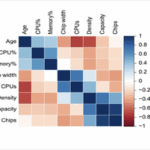![]() Nuvoton Technology has introduced the NuMicro MG51 series, an enhanced 1T-8051 microcontroller family for use in home appliances, LED dimming, motor control, and industrial automation applications.
Nuvoton Technology has introduced the NuMicro MG51 series, an enhanced 1T-8051 microcontroller family for use in home appliances, LED dimming, motor control, and industrial automation applications.
The MG51 series is built around a 1T-8051 core operating at up to 24 MHz and offers up to 64 KB Flash memory, 4 KB SRAM, and 4 KB LDROM. It supports a supply voltage range from 2.4 V to 5.5 V and an operating temperature range from -40°C to +105°C. The design incorporates noise immunity features, with ESD protection rated to 7 kV and EFT protection to 4.4 kV.
This series includes up to 12-channel PWM for motor control, up to 15-channel 12-bit ADCs with a 500 kSPS sampling rate for sensing applications, and as many as 46 configurable GPIO pins in the 48-pin package. Integrated communication interfaces include up to five UARTs, one SPI, and one I²C port. Three of the UARTs meet ISO 7816-3 standards and can operate with automatic parity checking. Two of the UARTs provide built-in error detection and automatic address recognition.
The MG51 series also features four 16-bit timers, 24 interrupt sources with four levels of priority, and flexible external interrupt configuration. These capabilities allow precise multi-point input control and event triggering in systems such as keypads, alarms, audio, and LED lighting controls.
Security features include Flash lock bits to prevent unauthorized code access, a 128-byte Security Protection ROM (SPROM) that is executable-only in security mode, and both a 96-bit Unique Identification (UID) and a 128-bit Unique Customer Identification (UCID) for system authentication.
The series is offered in six package types, including TSSOP20/28, QFN20/33, and LQFP32/48. Development tools include NuMaker boards, Nu-Link debuggers, and toolchain compatibility with Keil C51, IAR EW8051, and NuEclipse SDCC. NuEclipse, Nuvoton’s Eclipse-based integrated development environment, supports both 8051 and Arm cores on Windows and Linux, offering plug-in integration for efficient project build, compile, and debug workflows.





Leave a Reply